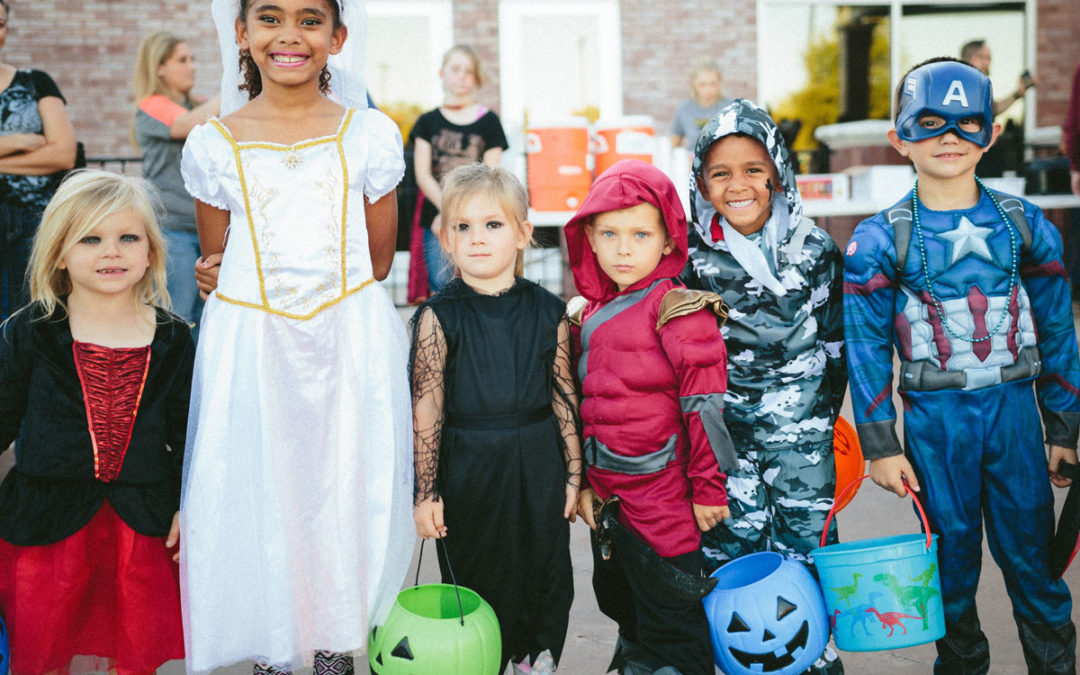
by North Shore Child & Family Guidance Center | Oct 30, 2018 | Blog
Halloween is one of the most exciting holidays of the year for youngsters. Candy, dressing up, parties at school—what’s not to love?
But if you have little ones, the sight of some of the scariest costumes and decorations is decidedly not something to celebrate.
“For children around three to five years of age, and sometimes even older, the ghoulish costumes and yard displays can be overwhelming and very scary, but that’s a natural part of their development,” says Dr. Sue Cohen, Director of Early Childhood and Psychological Services at North Shore Child & Family Guidance Center. “Luckily, most pre-schools and even elementary schools advise parents to avoid the scary kinds of costumes, so the schools themselves are typically safe zones. But once your child heads out to trick-or-treat, they’re likely to confront some frightening sights.”
Of course, you know your child, so you’re the best judge of how scared they are likely to be. But as with all parenting issues, preparing ahead of time and anticipating any problems is the wisest strategy. Some tips:
- Let them express the fears they have and reassure them in a calm voice that it’s OK to have those feelings.
- Play a game where your child scares you, and then laugh about it.
- Show them costumes online, so they’ll have an idea of what to expect.
- Do some crafts at home that create ghosts and other Halloween décor. Explain that any scary front lawn displays are made of fabric and paint, just like the crafts you made together.
- Some children don’t like something covering their faces, so you might want to avoid costumes with masks.
- If they are frightened by masks on other people, put one on yourself and take it off to show them that you are still there!
- If any older sibling is wearing a potentially scary costume, let your young one watch as they put on their makeup or masks, so they can gradually see how their big brother or sister transformed into the witch or warlock—and that it’s still them under the disguise.
- Make a visit to your local library and ask the librarian for books that help children see that Halloween is full of pretend things—some scary and others just plain fun! Click here for some great choices.
What about if your child just adores his or her costume but when Halloween arrives, their mood changes and they refuse to wear it? “Try a compromise,” advises Cohen. “Let them bring the costume to school instead of putting it on before they go, or have them just wear part of the outfit. It’s definitely not something worth having a power struggle over, so if they refuse to wear it, let it go.”
Sources:
https://www.parents.com/toddlers-preschoolers/development/fear/4-ways-to-make-halloween-less-scary/
https://www.washingtonpost.com/news/parenting/wp/2016/10/24/childrens-halloween-books-that-are-a-real-treat/?noredirect=on&utm_term=.d34809c07609

by North Shore Child & Family Guidance Center | Oct 17, 2018 | Blog
It’s not unusual for teens to have times when they feel down in the dumps. In fact, it would be abnormal if they never felt sad! But how do you know when “normal” sadness has developed into depression?
“Both children and teens are at risk of depression when they experience traumatic events in their lives, such as divorce, death of a loved one, abuse or illness,” says Elissa Smilowitz, LCSWR and Coordinator of Triage & Emergency Services at North Shore Child & Family Guidance Center.
But there isn’t always a dramatic event that triggers depression.
“Beginning around puberty, the risk of depression in teens increases,” says Regina Barros-Rivera, Associate Executive Director at the Guidance Center. “Their bodies are changing, and they’re experiencing hormonal fluctuations that can make them irritable and moody.”
Approximately 1 in 5 teens experience major depression, but about 60% do not receive treatment.
But moodiness doesn’t necessarily indicate depression, she adds. “It’s normal behavior for teens to begin separating from their parents and trying to become their own individuals. A certain amount of rebellion is common at this time, as they are attempting to determine and establish who they are.”
During the teen years, peers become the number one influence in each other’s lives, but that doesn’t mean your role as a parent is any less significant. “Even though you feel them pulling away, your teens still need you during this time,” says Barros-Rivera. “They are more likely to begin engaging in risky behavior, so your influence is as important as ever. They need you to help them develop good judgment.”
Along with adolescence comes a whole host of new pressures. Schoolwork, body image, sexual orientation and peer pressure all can combine to make a teen feel overwhelmed.
So, while moodiness is a hallmark for adolescents, how do you know when your teen is experiencing depression and might need professional treatment?
Here are some signs that may indicate depression:
- Withdrawal from friends and family
- Anxiety
- Low self-esteem
- Increased anger
- Worry about loss of control
- Crying often
- Inability to feel joy
- Changes in appetite (either increased or decreased)
- Sleeping more or less than usual
- Feeling tired
- Changes in grades or attitude toward school
- Having trouble concentrating
- Physical complaints like headaches or stomachaches
- Use of drugs and/or alcohol
- Expressing thoughts of suicide or wanting to die
Remember, it’s important that a medical doctor examine your teen since some symptoms of depression can have a physical cause such as thyroid problems, diabetes or other conditions. It may also run in families.
If you begin to see several of these symptoms lasting two weeks or more, contact a mental health professional. You can reach North Shore Child & Family Guidance Center at 516-626-1971.
Note: For some helpful tips on preventing depression in your child or teen, click here for an article from the Mayo Clinic.
Sources:
https://www.mayoclinic.org/healthy-lifestyle/tween-and-teen-health/in-depth/teen-depression/art-20046841
https://www.medicinenet.com/teen_depression/article.htm
https://www.nimh.nih.gov/health/statistics/major-depression.shtml
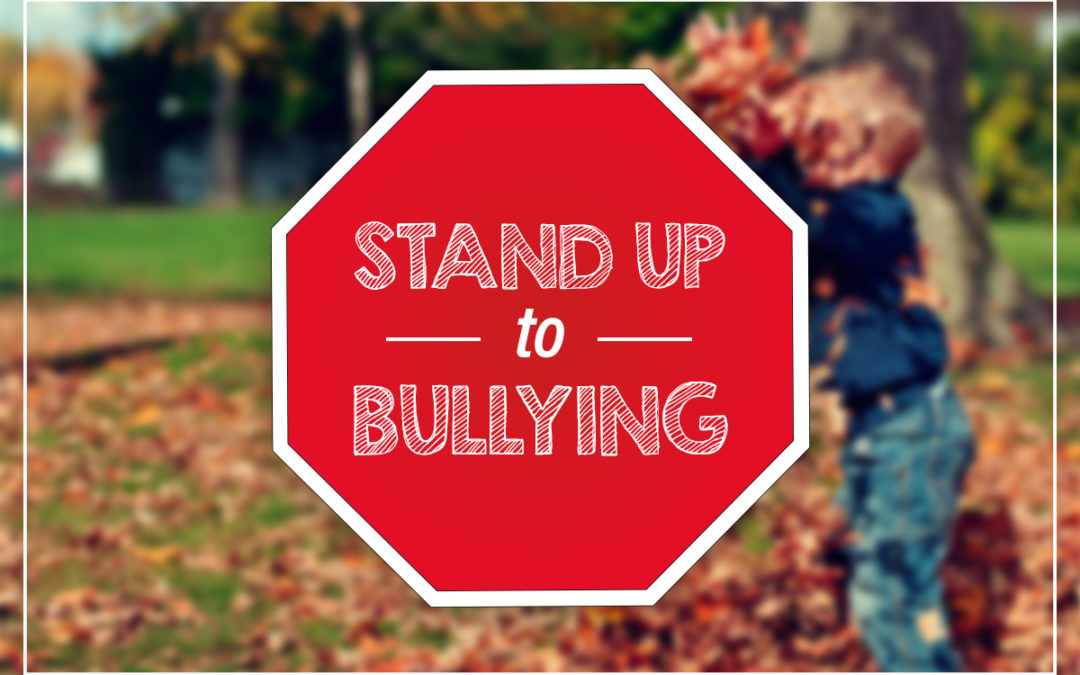
by North Shore Child & Family Guidance Center | Oct 9, 2018 | Blog
Today marks National Stop Bullying Day, and here’s a story that showed how some stand-up students stood up against bullying in their school. A few years back, members of a Wisconsin middle school basketball team were lauded as heroes, and rightfully so. When the boys noticed some bullies making fun of one of their cheerleaders—a 14-year-old girl named Desiree who has Down’s Syndrome—they took action, walking over to the bleachers and telling the offenders to cut it out. As one of the boys told reporters, “They were pointing and laughing at her from the stands. It’s not funny to make fun of somebody by the way they look or act.” Another said, “This is not a one-time thing. You always have to stick up for kids that are bullied. It’s the right thing to do.”
Another group in New York City, Teen Pact, has taken steps to combat cyberbullying by producing public service announcements that were run nationwide. One PSA depicts a boy texting an affectionate message about a classmate. His friends then pass it on and when it goes viral he becomes the target of unrelenting teasing and taunting. The PSA message is: “It’s not funny anymore, don’t be an accidental bully.”
Just how many kids are being tormented, either online, in school or both? Studies report some startling statistics:
- 83 percent of girls and 79 percent of boys report being bullied either in school or online.
- 75 percent of school shootings have been linked to harassment and bullying against the shooter.
- About 160,000 teens skip school every day because they are bullied, and 1 in 10 teens drops out of school due to repeated bullying.
- Kids who are bullies as young adults continue the trend of abuse and violence into adulthood. By the age of 30, about 40 percent of boys identified as bullies in middle and high school had been arrested three or more times.
The most frequent targets are kids seen as “different”—gay or transgender youth, those with special needs or who are overweight—but no kid is immune from being a victim.
While bullying isn’t a new phenomenon, cyberspace obliterates any sense of sanctuary that children once found when they were away from school and in their own homes.
Laws such as the Dignity for All Students Act (DASA), which took effect in July 2012, seeks to provide students with a safe and supportive environment free from discrimination, intimidation, taunting, harassment and bullying on school property, buses or at a school function.
DASA provides an opportunity for parents to talk to their children about how to protect themselves from bullying and offers them a context to discuss how to be sensitive to others who are different. This is, of course, providing that parents are able to engage their children in an accepting and nonjudgmental manner that opens communication.
But laws like DASA aren’t enough to tackle what is a social problem. No amount of legislation and no penalties for intimidating schoolyard behavior can guarantee that children will be safe at all times whether inside or outside of school.
These laws must be complemented by support at home, pro-social bonds among neighbors and consistent community standards against bullying, bias and harassment, including in cyberspace. Otherwise, the legislation will be little more than a paper tiger, another layer of bureaucracy with limited influence in the real world.
Note: This article, written by North Shore Child & Family Guidance Center Executive Director Andrew Malekoff, was originally published in Anton Media.
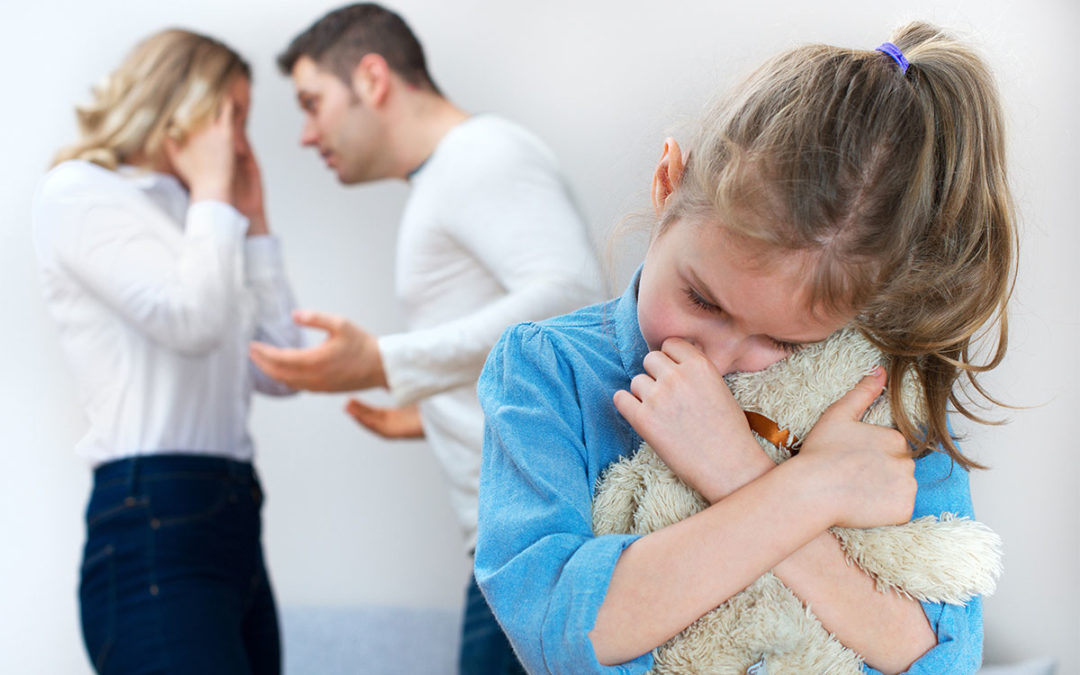
by North Shore Child & Family Guidance Center | Sep 27, 2018 | Blog
With about 50% of marriages ending in divorce, the number of children and teens who experience their parents’ separation is huge. And, while divorce doesn’t have the same stigma it did years ago, it still can be a very difficult event in a young person’s life.
“The dissolution of their parents’ marriage can create enormous stress for youngsters,” says Elissa Smilowitz, LCSWR and Coordinator of Triage & Emergency Services at North Shore Child & Family Guidance Center. “Divorce can be devastating to the children’s feelings of safety, causing fear of abandonment and fear of losing a parent’s love. Anxiety, depression and low self-esteem are common.”
Guilt is often another problem, she adds. “Many times young children blame themselves for the divorce and think that it is somehow their fault that it happened.”
In addition, many parents make the mistake of talking negatively about their ex-spouse in front of their children. “This upsets them because they see their parents as their caretakers, and they need to feel safe and supported by them,” says Smilowitz.
The Children’s Center
North Shore Child & Family Guidance Center runs a program called the Children’s Center at Nassau County Family Court, which provides care and early learning to almost 2,000 children annually, ages 6 weeks – 12 years, while their parents or guardians are conducting court business, including divorce proceedings. For information, please call (516) 626-1971.
When parents put their kids in the middle of their battles, the children struggle with issues of loyalty. “Even if they are very caring parents, they may do things inadvertently that cause distress to their child, such as asking the child to talk with the ex-spouse about a change in weekend plans instead of dealing with the adult directly.”
Here are some tips on how to help your children deal with divorce:
- Be supportive toward the child, reassuring them that both parents will always love them.
- Encourage your kids to speak to you openly about all their feelings, and validate that those feelings are normal and completely acceptable.
- Learn how to co-parent the children so there is no confusion on discipline. Rules about bedtime, homework and the like should remain consistent.
- Never talk negatively about the other parent in front of the children.
- If possible, show a united front by attending events like back to school nights together.
- Let their teachers know about your separation so they are on the lookout for any troubling behaviors from your child.
- Foster the relationships your child has with your ex’s family so that they don’t feel the loss of those attachments.
- Consider placing your child in a therapeutic group so they don’t feel like they are alone in their experience. Many schools have programs like “Banana Splits” offered by school-based social workers.
- Be sure to get support for yourself through this process, through friends, family members and professional therapy, if needed.
Remember, the post-divorce relationship with your ex-spouse is perhaps the most important factor in how well your children handle the matter, so do your best to get along for their sake. Knowing that they are loved no matter what is the key message.

by North Shore Child & Family Guidance Center | Sep 18, 2018 | Blog
Do you have a child or teen who is obese? If so, they are not alone. In the United States, the percentage of children and teens who are obese has more than tripled since the 1970s. Today, nearly 1 in 5 school age U.S. children and young people (6 to 19 years) is considered obese. When you factor in those who are considered overweight but not yet obese, the figure rises to 31%.
Why the dramatic increase? While it’s true that family history, genetics and metabolism can influence weight, that doesn’t explain why the percentage of overweight/obese youngsters has gone up so much in a relatively short period.
Behavior and habits are the more likely culprits. According to Dr. Sue Cohen, Director of Early Childhood and Psychological Services at North Shore Child & Family Guidance Center, technology in particular plays a significant role.
“Many families have become sedentary with TV, computers and videogames as the culprits,” she says. “If parents are inactive and spending a lot of time on their phones or iPads, they need to shift their behaviors and lead as role models for their kids.”
Dr. Cohen recommends approaching the issue as a family topic rather than focusing on an individual child. “The message should be that we all need to eat healthier and we can all start a fitness program as a family,” she says. “You don’t want to make your child feel badly about themselves, so focusing on healthy eating and activity rather than appearance is extremely important.”
Why do kids overeat? Emotional issues are often factors when it comes to weight gain. Says Dr. Cohen, “Overeating is often a result of anxiety or depression.” If your child is exhibiting signs of these conditions, professional therapy is highly recommended.
Finding Healthy Foods
Are you among the Long Islanders whose location and/or financial issues make it difficult to access healthy, fresh foods? Many soup kitchens and food pantries don’t have a large supply of fresh groceries, but Community Solidarity shares nutritious food to those in need, with 50% of that being fresh produce. To find out more, visit http://communitysolidarity.org.
Here are some things to keep in mind when broaching the subject of weight with your children, from the Academy of Nutrition and Dietetics:
Encourage open dialogue. Go ahead and talk with your children about weight and encourage them to share their thoughts and feelings about body image whenever they arise. When children discuss feelings about weight with you, be sure to listen and acknowledge that the feelings are real. If you have had similar experiences, it may help to share them. Explain that people come in all different shapes and sizes and you love your child no matter what.
Don’t make negative comments. Judging your own body or your child’s can result in lasting detrimental effects to your child’s body image and relationship with food. Set a good example for children in the way you talk about your own body as well as others. Skip the lure of fad dieting yourself.
Take action. Children learn fast, and they learn best by example. Teach children habits that will help keep them healthy for life. In general, if your child is elementary age or younger and you have some weight concerns, don’t talk about it; just start making lifestyle changes as a family. The best thing you can do is make it easy for kids to eat smart and move often. Serve regular, balanced family meals and snacks. Limit the time your child spends watching television or playing video games. Look for ways to spend fun, active time together.
Avoid the blame game. Never yell, scream, bribe, threaten or punish children about weight, food or physical activity. If you turn these issues into parent-child battlegrounds, the results can be harmful. Shame, blame and anger are setups for failure. The worse children feel about their weight, the more likely they are to overeat or develop an eating disorder.
Talk with your healthcare provider. If a health professional mentions a concern about your child’s weight, speak with the professional privately. Discuss specific concerns about your child’s growth pattern and ask for suggestions on making positive changes in your family’s eating habits and activity levels.
Seek advice. Check out local programs and professionals who specialize in youth. Look for a registered dietitian nutritionist with a specialty in pediatric weight management. Many hospitals and clinics have comprehensive programs with education and activities for both kids and adult family members. Some of these options may be covered by your health insurance plan.
Sources:
www.eatright.org/health/weight-loss/overweight-and-obesity/how-to-talk-to-kids-about-weight-and-obesity
www.cdc.gov/healthyschools/obesity/facts.htm
www.nhlbi.nih.gov/health/educational/lose_wt/
www.aecf.org/blog/three-in-10-us-kids-are-overweight-or-obese/?gclid=EAIaIQobChMIzqPH6djC3QIVlovICh0mRwGEEAAYASAAEgJqkfD_BwE

by North Shore Child & Family Guidance Center | Sep 10, 2018 | Blog
On the days following the attacks of 9/11, North Shore Child & Family Guidance Center responded to the crisis by offering counselling and support to bereaved children and families all across Long Island and in New York City. Following is the reflection of Executive Director Andrew Malekoff on the memorial service at the World Trade Center on October 28, 2001, which he attended with a group of mental health workers who offered their support for the bereaved.
As I recall, at the end of the service there was a chill in the air as the sun disappeared behind the ruins of the World Trade Center. Renee Fleming, accompanied by the Orchestra of St. Luke’s, sang God Bless America.
Moments earlier I said goodbye to the family I stood beside during the memorial service. They sat in the back row of our section, one of scores of sections filled with thousands of folding chairs, each chair occupied by a grieving family member. I stood with my back against an iron gate so I would not block anyone’s view. The family had lost its father and husband, a decorated firefighter. The widow was a slight woman of Italian descent, probably in her late sixties.
Photos of her husband were pinned to her wool coat, and to the coats of her three children. He was handsome. He had a white moustache and a full head of silvery hair, combed straight back. When the memorial service started an hour earlier one of her sons, an off-duty police officer, asked if I would make sure that no one obstructed his mother’s view. He said, “You can see how short she is.”
The service began with a processional that included His Eminence Edward Cardinal Egan, Archbishop of New York. Then, police officer Daniel Rodriguez of the NYPD sang The Star Spangled Banner. He had become a national presence by appearing in his dress blues and singing the national anthem at Yankee Stadium before the 97th World Series that pitted the Yankees against the Arizona Diamondbacks.
Everyone was on his or her feet. A massive wall of mourners rose around the tiny figure to my right. When I saw her struggling to climb, I took her arm and helped her up onto a folding chair. I told her that she could grab on to me. “Hold on to my shoulders,” I said. She hesitated. I told her, “Don’t worry, you won’t knock me over.”
I could feel her trembling as she removed her right hand from my shoulder and fumbled for a tissue inside her coat pocket. I reached into my pocket and handed her a handkerchief.
When I was picking out my clothes earlier in the morning I had come across several unopened packets of white handkerchiefs. They belonged to my father who died seven years earlier. As I got dressed, I thought that today my father would want somebody who needed it to have one of his handkerchiefs. At first she refused my offer, not wanting to impose. I urged her, “Please, take it. It’s okay.”
Ten years later, my father’s handkerchiefs remain tucked into my dresser drawer – a daily reminder of when I joined a parade of broken hearts. Sometimes I close my eyes, think back and try to recall what things felt like before that sunny fall morning at ground zero.
Note: A version of this story originally appeared in Anton Media.
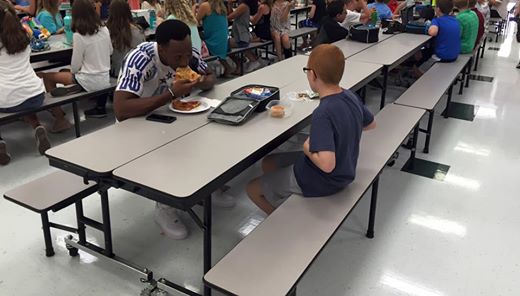
by North Shore Child & Family Guidance Center | Sep 6, 2018 | Blog
September marks the start of another new school year and, for football diehards, it’s also the kickoff to a new season. The flowing together of the two brings to mind the moving story of former Florida State University (FSU) wide receiver Travis Rudolph and Bo Paske, a sixth grade boy with autism.
At the start of the school year in 2016, Rudolph and several teammates visited Montford Middle School in Tallahassee, located near the FSU campus. When Travis spotted 11-year-old Bo sitting alone in the cafeteria, he walked over with his slice of pizza, joined him, and struck up a conversation.
Travis’ simple act of kindness drew national attention when a photo of the two sitting across from one another went viral. Bo described the lunch as “kind of like me sitting on a rainbow.” Travis remarked: “A lot of people give me credit for doing what I did, even though I just see it as that is me.”
Bo told Travis that he was a big FSU fan. The two of them stayed in touch after their first encounter.
Leah Paske, Bo’s mom, wrote about it on Facebook: “Several times lately I have tried to remember my time in middle school. Did I have many friends? Did I sit with anyone at lunch? Just how mean were kids really? Now that I have a child starting middle school, I have feelings of anxiety for him, and they can be overwhelming. Sometimes I’m grateful for his autism. That may sound like a terrible thing to say, but in some ways I think, I hope, it shields him. He doesn’t seem to notice when people stare at him when he flaps his hands. He doesn’t seem to notice that he doesn’t get invited to birthday parties anymore. And he doesn’t seem to mind if he eats lunch alone.”
She went on to say, “A friend of mine sent this beautiful picture to me today and when I saw it with the caption ‘Travis Rudolph is eating lunch with your son’ I replied ‘Who is that?’ He said ‘FSU football player,’ then I had tears streaming down my face. I’m not sure what exactly made this incredibly kind man share a lunch table with my son, but I’m happy to say that it will not soon be forgotten. This is one day I didn’t have to worry if my sweet boy ate lunch alone, because he sat across from someone who is a hero in many eyes.”
Difference and inclusion are terms that are increasingly in vogue in today’s public schools. Growing numbers of children who were previously separated in special education classes and schools are being integrated into the “mainstream” in order to reduce costs and provide less restrictive environments for learning and social-emotional development.
Labeled children, particularly as they approach adolescence, are often objectified, devalued, isolated and ridiculed by their peers. Objectification robs individuals of their humanity. In such relationships the different child simply becomes “the other,” the one too often left out in the cold.
In an era when there seems to be no shortage of awful stories generating from college campuses, the story and photo of Travis and Bo is a breath of fresh air. Henry James said that “a good story is both a picture and idea, and that the picture and the idea should try to be interfused.”
The picture of Travis joining Bo at the lunch table tells us that a simple act of kindness can go a long way to making a difference in someone’s life. We learned from Travis that what it takes is just a little effort—and an abundance of heart.
Note: This article first appeared in Anton Media.
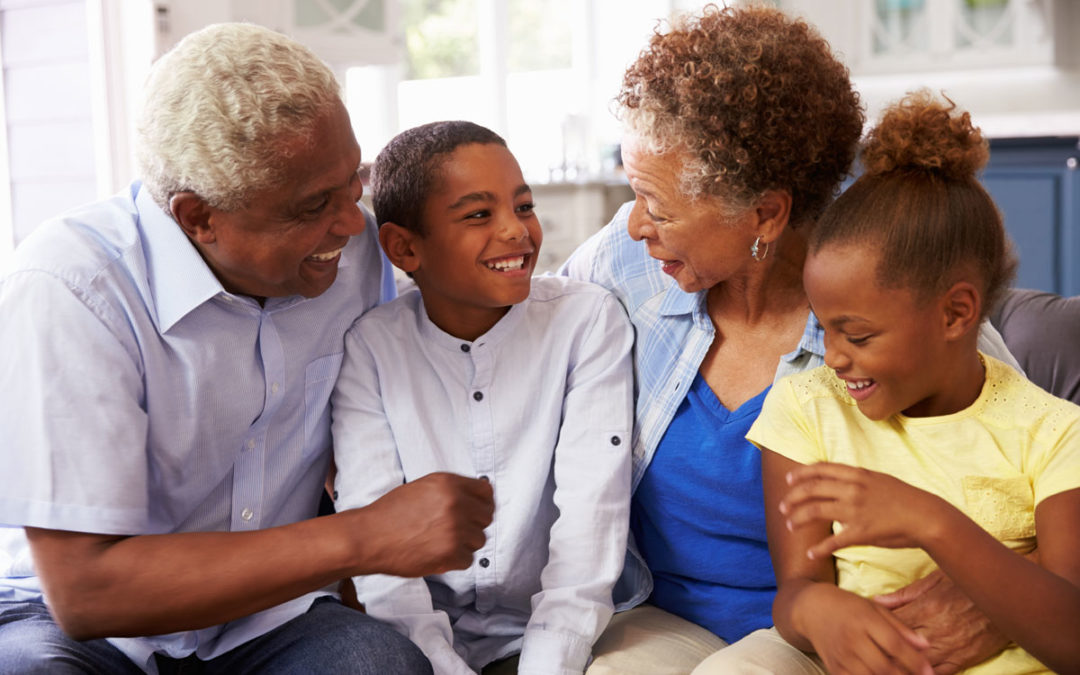
by North Shore Child & Family Guidance Center | Aug 29, 2018 | Blog
Seeing grandparents walking hand in hand with their grandchildren is a heartwarming sight. But our usual assumptions about the relationship may be inaccurate. While we tend to believe that the grandparents are probably spending a few hours babysitting the kids, more and more are the primary caregivers, with their grandchildren as their full-time responsibility.
A July 2018 research update from the Butler Center for Research cites the most recent figures available from the U.S. Census, which indicate that in 2016, 2.5 million grandparents were responsible for the basic needs of one or more grandchildren under 18 years old living with them. Nearly 6 million children under 18, with 2.6 million of those under age 6, were living in their grandparents’ household.
Why the increase? Although this isn’t a new phenomenon—one prominent example is President Barack Obama, who was raised largely by his grandparents—part of the reason the figures have risen is believed to be a result of the opioid epidemic. According to the CDC, drug overdose deaths in the United States have more than tripled from 1999 to 2015, and often leave children parentless.
Other factors include incarceration, death of a parent or parents, or child abuse.
There are many concerns for these grandparent caregivers, including economic problems, as well as emotional factors, says Dr. Nellie Taylor-Walthrust, Director of the Guidance Center’s Leeds Place. “These grandparents are often isolated, struggling with health and financial issues that add additional stress to the total family,” she says.

[Source: U.S. Census Bureau]
To serve local grandparents who are in this situation, the Guidance Center created a program called C-GRASP, which stands for Caregiver Grandparent Respite and Support Program. Through C-GRASP, we provide support and education for grandparents who are the primary caregivers of their young grandchildren.
“Through partnerships with a team of supportive local entities, we provide the grandparents with a variety of services, including respite and peer support activities, counseling, clothing, food, housing assistance, transportation and school advocacy,” says Dr. Taylor-Walthrust. “Those grandparents who take part in C-GRASP feel supported by the services they receive that are designed to meet their individual needs. They also have the opportunity to develop a social network with other grandparents who are experiencing the same life challenge.”
To learn more about C-GRASP, contact the Guidance Center at (516) 626-1971.
Sources:
https://www.hazeldenbettyford.org/education/bcr/addiction-research/grandparents-raising-grandchildren-ru-718
http://www.pewtrusts.org/en/research-and-analysis/blogs/stateline/2016/11/02/why-more-grandparents-are-raising-children
https://theconversation.com/why-more-grandparents-are-raising-their-grandchildren-83543
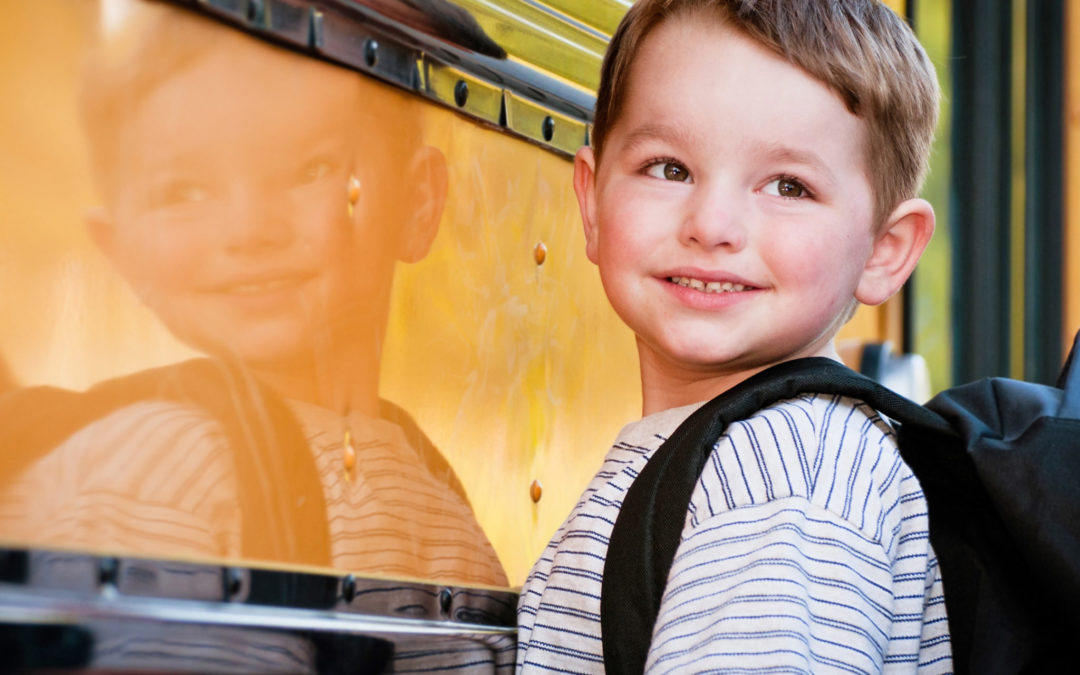
by North Shore Child & Family Guidance Center | Aug 21, 2018 | Blog
Curing the Kindergarten Jitters
It’s National Get Ready for Kindergarten month. If you’re a parent with a child who is about to head to “big kid” school for the first time, you may be faced with an anxious little one—plus you may have some jitters yourself!
According to Dr. Sue Cohen, Director of Early Childhood and Psychological Services at North Shore Child & Family Guidance Center, starting a new school can be a challenging situation for many children. “There are lots of new people, routines and lessons to be learned,” she says. “But the good news is that there are many things that parents can do to ease this rite of passage.”
If your school allows it, plan to bring your child to their classroom to meet their teacher before the school year begins. Also take them to see the gym, the playground, cafeteria, library, nurse’s office, etc.
“Call the school now to set up a time to visit, even if the teacher won’t be available,” says Cohen. “The unknown is what’s most scary for children, so the more you can familiarize them with the school and the routine, the less worried they will be.”
Help for Cash-Strapped Parents
If purchasing supplies is a financial hardship, help is available. Many churches, community groups and other organizations offer free backpacks and other items on your school shopping list. Here are some places to contact for help:
But be careful not to put your own fears onto your child. “A lot of parents reflect on their own first-day jitters, and they assume their child feels the same way,” says Cohen. “Listen carefully to what they tell you. Let them express all their feelings, which may include fear but also excitement!”
Below are some more suggestions to make the transition as smooth as possible:
- Some schools help set up late summer playground events for incoming kindergartners. If they do, take advantage of the opportunity for your child to meet some new friends.
- Talk about what they are going to learn; make a game of “playing school” by introducing some of the activities that go on in a typical school day.
- Bring them with you when you shop for school supplies. Choosing their own folders, pencils, crayons and the like will make the experience feel special.
- Get your child on a regular bedtime schedule before school begins so they are accustomed to getting up at the same time they’ll need to awaken for school.
- Sit together and make a morning game plan—what are some breakfast ideas, which outfits will they want to wear their first week, and how they will be getting to school. If you can, do some practice runs (or walks) to the bus stop, if they’ll be taking one.
- Teach your child their basic contact information, including the correct spelling of their name, their address and their phone number. Also help them practice writing their own names.
- Make sure they know how to take their shoes on and off, and also how to zip up their backpacks.
Most of all, relax! When you give your children a chance to talk about all of their emotions and react calmly to whatever they say, it reassures them that everything will be alright. “Don’t be upset if they’re not upset,” says Cohen. “They may hop on the bus and do just fine.”

by North Shore Child & Family Guidance Center | Aug 14, 2018 | Blog
When you have a child or teen who is experiencing depression, anxiety, substance use or any other condition impacting their mental health, it’s often hard to find the time to take care of your own needs. But it’s extremely important that you don’t let guilt or shame stop you from focusing on your physical and emotional health.
“Many parents or other caretakers think that they should put all of their energy into their child’s needs and that taking out time for their own well-being is selfish,” says Andrew Malekoff, Executive Director of North Shore Child & Family Guidance Center. “Nothing could be further from the truth, because if you neglect your own health you won’t be able to be fully present when your child needs you.”
Parent Support Groups
Many groups exist for parents who are caring for children with all kinds of special needs, including mental health issues. Call North Shore Child & Family Guidance Center at (516) 626-1971 or email info@northshorechildguidance.org to ask about our support group and therapy offerings; visit NAMI’s website at namiqn.org/programs/family/ or email them at Office@namiqn.org; and for NAMI Huntington, visit www.nami-huntington.org/
The stress of caring for a child with mental health issues can be even harder than if your child has a physical illness, adds Malekoff. “In our society, there is still a stigma associated with mental illness, and that often stops people from asking for help. But even if they’ve taken the steps to get therapy or other treatment for their child, they often don’t realize or accept that they, too, need support.”
Taking care of your mind and body will help create the resilience and strength that you will need in your role as a caretaker. In celebration of National Wellness Month, following are seven wellness tips to keep in mind so you can be at your best for yourself and your children.
- Get enough sleep. When you are overtired, it’s very difficult to function well. Take a break from time stealers like social media and television and use that time to rest!
- Meditate. Numerous studies show that even a few minutes a day of meditation will help reduce your stress. Not sure how? Google “how to meditate” and you’ll find lots of helpful tips and videos. You can also google “meditation on long island” to find a group.
- Exercise. Whether you go for a brisk walk, workout at a gym, or take a yoga class, the benefits of exercise are undeniable. Exercise boosts endorphins, those “feel good” chemicals, and also promotes relaxation.
- Try massage, acupuncture or other body treatments. Don’t consider it a luxury; think of it as essential to keeping your strength up for the challenges of caretaking.
- Take a break. That might mean going to a movie, engaging in a hobby or meeting with a friend.
- Spend time in nature. A walk on the beach, hike in the woods or time tending to a garden are among the many options, all of which will help bring down your stress level.
- Ask for help. Family and friends rally around you if your child has cancer. The good ones will want to be there for you when the issue is mental health, too.
Remember, being your best for your child requires taking care of yourself. Working on your wellness instead of feeling guilty is an essential part of helping everyone feel their very best.
Sources:
https://www.verywellmind.com/self-care-strategies-overall-stress-reduction-3144729
https://www.mayoclinic.org/tests-procedures/meditation/in-depth/meditation/art-20045858
https://www.health.harvard.edu/staying-healthy/exercising-to-relax
https://namiqn.org/programs/family/

by North Shore Child & Family Guidance Center | Aug 9, 2018 | Blog
Although we’re in the so-called “dog days” of summer, there is still plenty of time to bring your kids outside to get a healthy dose of sunshine. And autumn, just around the corner, is also a perfect season to explore the outdoors with your kids.
Studies reveal many benefits of making nature a central part of your child’s world. Among them: an increase in self-esteem and resilience against stress, depression and adversity; improved concentration, learning, creativity, cooperation and self-awareness; and a decrease in childhood obesity.
At the Guidance Center’s Marks Family Right From the Start 0-3+ Center (RFTS), we integrate outdoor activities in the therapeutic process. In addition to an organic garden, RFTS has a Nature Nursery that is primarily designed for our early childhood population of children under 6 years old. The Nature Nursery features a variety of “tools,” including a rock and water garden, shells, pine cones, wind chimes and more, all designed to help children explore the sights, sounds, smells and touch of nature.
Bruce Kaufstein, Director of Clinical Services at the Guidance Center, describes how the children and their therapists have a variety of ways to experience all their senses as they play in a sandbox, touch the leaves and pine cones, produce musical sounds on percussive instruments, draw on a chalkboard or paint on an outdoor “canvas.”
“They are able to smell the aroma of an herb garden,” says Kaufstein. “They can explore and play music on a music board that contains pots and pans and shake maracas, castanets and other wooden instruments. A chalkboard and painting pallet provides the backdrop for recreating images and color of the nature they see around them.”
Vanessa McMullen, Supervisor at RFTS, says that many children are so connected to tech gadgets that they’ve lost touch with the natural world. “The various texture, sounds, smells and sights in the Nature Nursery help children explore their creative sides, and we also use it with the older children, to give them a natural, soothing space to experience positive visualization and deep breathing.”
According to Alicia Rabinowitz, LMSW at the Guidance Center, her young clients love going to the Nature Nursery and the adjacent organic garden. “My clients love to pick from the garden, wash and prepare in the kitchen, and then go out to picnic table in the Nature Nursery to have what we call our ‘Chat and Chew.’ I also use the walking tree stump trail created to assist clients with balance and to bring up topic of support and support systems.”
Of course, the benefits of our Nature Nursery can be found in natural settings all across our Island and beyond. Following are some of ideas of great outdoor activities you can do with your kids, from the Child Mind Institute:
-
- Set up treasure hunts. Make a short, simple list of things for your kids to look for outside—such as “a shiny object,” or “something you can hold liquid in.” The satisfaction of finding the objects turns it into a reinforcing activity, and it will keep them outside in search of the next list item.
- Identify things. Get a book—with pictures—about birds, bugs, leaves, trees, or flowers in your local area, and go outside looking for specific creatures in the book to identify.
- Give them the tools to discover. Gifts like a bug box, a magnifying glass, or a shovel will promote ways to explore the outdoors with a fun new tool that feels professional and empowering.
- Go to an outdoor performance. If your child can’t take her eyes off Nickelodeon, take her to a puppet show in the park. For older kids who like movies, take them to outdoor plays and musicals.
- Start a collection. You can find small parts of nature like rocks or shells almost everywhere, and starting a collection gives a kid motivation to search and therefore spend time outdoors.
- Use technology to your advantage. If your kid is hooked on electronic devices, have him bring along a camera or phone and create video or photo journals of various nature trips.
- Plant a garden. Tracking the progress and seeing the eventual product of a seed your child planted provides a different, deeper sense of achievement than beating a difficult level in a video game or getting a lot of likes on your last Instagram.
- Take a hike. Walking on a trail to a waterfall or breathtaking view also gives kids a sense of accomplishment, rewarding them for their physical efforts during the hike. This goes for bike rides, too.
- Make art projects. For kids who would rather sit inside with some arts and crafts, get them to use objects from nature for their art. Picking flowers to press onto paper, using berry juice as paint, or collecting pinecones and rocks to decorate are ways to infuse nature into activities they already enjoy.
- Build something. You can also reverse the process and make art with your kids that will support and nurture the natural world—things like bird feeders or flower boxes. Kids will keep coming back to watch an object they created provide for other living things.
Sources:
https://www.doc.govt.nz/Documents/getting-involved/students-and-teachers/benefits-of-connecting-children-with-nature.pdf
https://childmind.org/article/ideas-for-getting-your-kids-into-nature/

by North Shore Child & Family Guidance Center | Aug 2, 2018 | Blog
Just a few months after celebrating six years of sobriety, singer Demi Lovato recently relapsed, overdosing on drugs, possibly opioids. As of this writing, she is hospitalized and, though expected to make a full recovery, still in serious condition.
The misuse of prescription medications such opioids has been a top concern for parents in recent years. According to the Substance Abuse and Mental Health Services Administration, prescription drugs are misused and abused more often than any other drug, except marijuana and alcohol.
Of course, prescription drugs aren’t the only problem. Adolescents are using drugs such as marijuana, Ecstasy, heroin, inhalants and more in alarming numbers.
Teen Drug Use—The Stats
According to the Monitoring the Future project, among 12th-graders during 2017, the drugs that were most reported for lifetime use were:
- Alcohol – 61.5%
- Marijuana – 45%
- ANY illicit drug other than marijuana – 19.5%
- ANY prescription drug – 16.5%
- Amphetamines – 9.2%
- Tranquilizers – 7.5%
- Hallucinogens – 6.7%
- LSD – 5%
- Ecstasy – 4.9%
- Inhalants – 4.9%
Among 10th-graders the 2017 results were:
- Alcohol – 42.2%
- Marijuana – 37%
- ANY illicit drug other than marijuana – 13.7%
- Amphetamines – 8.2%
- Inhalants – 6.1%
- Tranquilizers – 6%
- Hallucinogens – 4.2%
- LSD – 3%
- Ecstasy – 2.8%
- Cocaine – 2.1%
Finally, among 8th-graders in 2017:
- Alcohol – 23.1%
- Marijuana – 13.5%
- ANY illicit drug other than marijuana – 9.3%
- Amphetamines – 5.7%
- Inhalants – 8.9%
- Tranquilizers – 3.4%
- Hallucinogens – 1.9%
- Ecstasy – 1.5%
- LSD – 1.3%
- Cocaine – 1.3%
There are several factors that put your teen at a higher risk of abusing drugs and alcohol, according to Regina Barros-Rivera, Associate Executive Director of North Shore Child & Family Guidance Center. “Kids and teens who are experiencing depression, anxiety, ADHD or a trauma such divorce, abuse or neglect are more prone to experiment with drugs,” she says. “They’re also at greater risk if there is a history of substance abuse in their family.”
Kathy Knaust, Clinical Supervisor at our Leeds Place location in Westbury, says parents should start educating their children when they are young. “One of our main goals is to help build a strong relationship with the parent and child early on,” she explains. “Parents should be aware of the extreme importance of the fact that they are role models to their children. When they help model appropriate responses to stress, disappointments and challenges in their own lives, their children learn to do the same.”
Following are seven tips from MyHealthNews Daily on how to speak with your kids about drugs:

by North Shore Child & Family Guidance Center | Jul 24, 2018 | Blog
Note: In honor of Minority Mental Health Month, this week’s blog talks about North Shore Child & Family Guidance Center’s Latina Girls Project.
Any parent of a teenager knows that the adolescent years can be challenging, and they aren’t alarmed when their kids exhibit a healthy dose of moodiness and angst. But for some young people, feelings of desperation and sadness can become overwhelming, and that’s when North Shore Child & Family Guidance Center steps in to help.
In her work as Associate Executive Director at the Guidance Center, Regina Barros-Rivera has counseled numerous teens who suffer from depression and anxiety. But a few years ago, she noticed a disturbing trend: An increasingly large number of first-generation Latinas were coming to the Guidance Center with severe depression, self-harming behaviors and suicidal thoughts. Many had stopped going to school, and some had been hospitalized for suicide attempts.
Barros-Rivera soon discovered that nationwide research mirrored what she was seeing at the Guidance Center. Studies show that Hispanic teenage girls are significantly more likely than their non-Hispanic peers to suffer from depression and thoughts of suicide. Sadly, many have attempted suicide or killed themselves.
Barros-Rivera, herself the daughter of immigrant parents, was gravely concerned—and determined to do something to help the teens and their families. She gathered a team of bilingual, multicultural counselors from the Guidance Center and created the Latina Girls Project, an innovative program that employs individual, group and family therapy, along with monthly outings and other activities, all designed to tackle issues such as depression, low self-esteem, school refusal and suicidal ideation.
WARNING SIGNS
Following are some signs that your child or teen may be at risk of a suicide attempt. From the American Academy of Child & Adolescent Psychology:
- Family history of suicide attempts
- History of depression
- Exposure to violence
- Impulsivity
- Aggressive or disruptive behavior
- Access to firearms
- Bullying
- Feelings of hopelessness or helplessness
- Acute loss or rejection
- Changes in eating or sleeping habits
- Frequent or pervasive sadness
- Withdrawal from friends, family, and regular activities
- Frequent complaints about physical symptoms often related to emotions, such as stomachaches, headaches, fatigue, etc.
- Decline in the quality of schoolwork
- Preoccupation with death and dying
If your child or teen exhibits these symptoms, contact the Guidance Center at 516-626-1971 for help.
A big part of the reason these girls are struggling is because they are pulled in conflicting directions, says Barros-Rivera. “Their parents want them to adhere to the traditional values of their homeland, while the girls seek to integrate into American culture,” she explains.
The result: Parents are often extremely overprotective; they won’t allow their daughters to venture out and participate in the activities such as sleepovers, dating or trips to the mall. “That leaves the girls feeling like they are trapped and have no way out, which creates a very dangerous situation,” says Barros-Rivera.
Even if the teens are allowed to go out with their friends, they are required to have a chaperone, such as a parent or brother. In addition, they are often relegated to gender-biased roles, required to cook, clean and take care of their siblings while their brothers are treated , as one girl said, “like princes.”
During individual and group therapy sessions, the girls realize that they can trust their counselors, many of whom also grew up as first-generation Latinas. The counselors teach the girls healthy ways to deal with stress and depression and better ways to communicate with their parents.
For their part, the parents become more compassionate about their daughters’ feelings and also understand the need to let their teens separate in healthy, age-appropriate ways. As one girl put it, “My parents learned that I just wanted them to be there for me and listen. They learned that it doesn’t help to question why I feel the way I do but to accept it and support me.”
The teens also go on supervised monthly outings to museums, historical sites and even Broadway shows, thanks to the support of the John and Janet Kornreich Charitable Foundation. These trips serve to boost their confidence and sense of independence. They also discover that there’s a great big world of opportunity out there for them, which allows them to feel optimistic about their futures.
“After we work with them, they see hope,” says Barros-Rivera. “They develop self-reliance and self-esteem.” With a big smile on her face, she adds, “I just love these girls!”
More Help for Your Teen from Latina Social Media Activists
It’s not unusual for teenagers to be reluctant to speak with their parents about issues such as depression. Of course, it’s important to do your best to engage them in these conversations, but there is also an important avenue you can use to help your daughter learn more about mental health from her peers. Share this link with them that highlights seven Latina activists who are blogging about mental health.
Sources:
http://www.humansafetynet.com/latina-teens/
https://www.aacap.org/AACAP/Families_and_Youth/Facts_for_Families/FFF-Guide/Teen-Suicide-010.aspx
https://fierce.wearemitu.com/things-that-matter/latina-mental-health-activists-follow-social-media/
http://www.cnn.com/2009/LIVING/10/20/lia.latina.suicides/index.html?eref=rss_us
https://adaa.org/living-with-anxiety/children/school-refusal
https://www.ncbi.nlm.nih.gov/pmc/articles/PMC2662359/
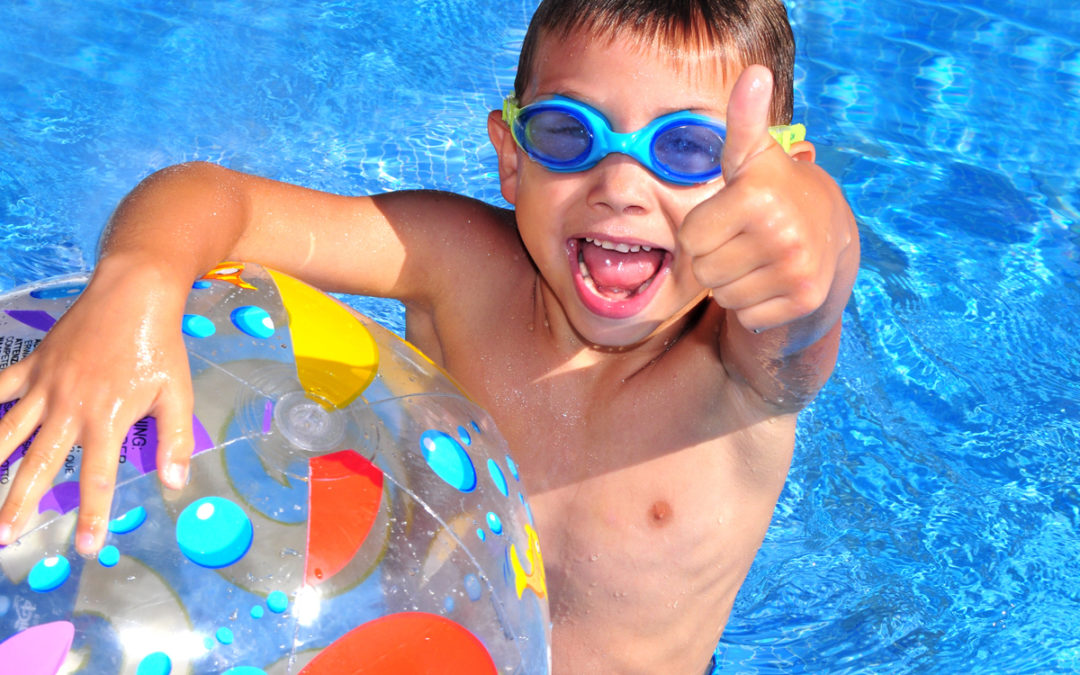
by North Shore Child & Family Guidance Center | Jul 19, 2018 | Blog
And how to help if your child is afraid of the water
With summer in full swing, your kids have likely been spending time at a pool or at the beach.
Lately there have been some tragic stories about children losing their lives to drowning. A recent Newsday article shared the frightening statistic that double the amount of boys than girls drown in water accidents, likely because of the types of activities that each gender participates in when they are in the water. In addition, for both boys and girls ages one to four years old, drowning is the leading cause of death in the United States.
There are many ways to prevent tragedies in the water from occurring. Here are some tips from the Mayo Clinic.
- Supervise. Never leave children unsupervised near a pool, hot tub or natural body of water. Don’t rely on air-filled or foam toys, such as water wings, noodles or inner tubes, to keep children safe.
- Teach children to swim. According to the American Academy of Pediatrics, most children age 4 and older can learn to swim. Children ages 1 to 4 might be able to learn depending on their physical and emotional development.
- Fence in your pool. Install a fence at least 4 feet tall that separates the pool area from the house and yard. The fence shouldn’t block the view of the pool from outside the fenced area.
- Install alarms. Use an alarm on the house door that leads to the pool area, a floating pool-alarm or a below-water alarm.
- Remove toys. Don’t leave pool toys in the water. A child might fall into the water while trying to retrieve a toy.
- Beware of drains. Don’t allow children to play near or sit on pool or hot tub drains. Body parts and hair can become entrapped by the strong suction.
- Wear a life jacket. Children and adults should wear personal flotation devices whenever riding in a boat or fishing. An air-filled swimming aid isn’t a substitute for a life jacket.
- Stay in designated areas. At public beaches, swim only in areas set aside for swimming. Pay attention to posted warnings about unsafe swimming conditions.
What if your child is afraid of the water? The reality is that some children grow up eager to jump into the pool, while it can be very difficult to get others to step anywhere near water.
First and foremost, never rush your child into jumping into the water. Thoughts of jumping into a pool may create a rush of anxiety in many children, so taking it slow is very important. Help your child feel safe by sitting near the pool with them and slowly stepping into the water together. Make sure to exhibit patience and understanding. Try to teach your child to swim at a private pool. This could definitely be less frightening than beginning in a large crowded one.
To watch a video with some tips on helping your child learn how to swim, click here.
Sources:
https://www.newsday.com/news/nation/drowning-deaths-boys-girls-schumer-1.19835016
https://www.mayoclinic.org/healthy-lifestyle/infant-and-toddler-health/in-depth/child-safety/art-20044744
http://www.swimming.org/learntoswim/tips-to-help-overcome-a-fear-of-swimming/
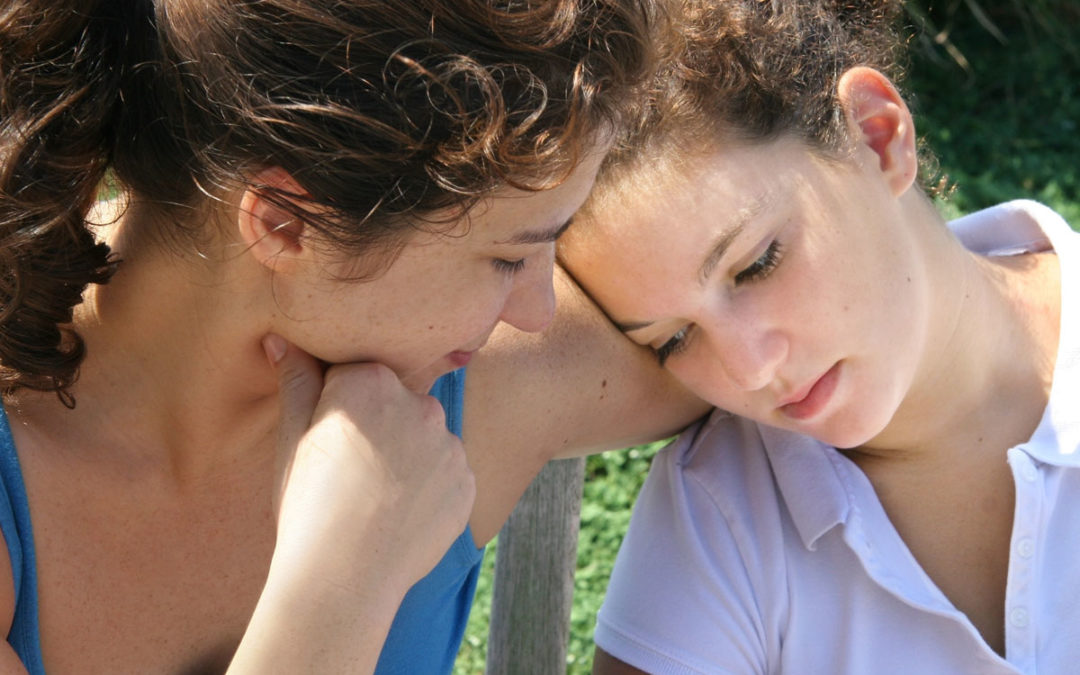
by North Shore Child & Family Guidance Center | Jul 12, 2018 | Blog
There’s no doubt about it. We are living in contentious, anxious and uncertain times. One can only wonder what young people think of the endless parade of public figures—government officials, businessmen, entertainers, professional athletes—screaming and cursing and crashing and burning before their eyes. Perhaps F. Scott Fitzgerald said it best when he wrote: “Show me a hero and I will write you a tragedy.”
And, although the atmosphere seems more anxiety-producing than ever, such feelings aren’t new. Several years ago, North Shore Child & Family Guidance Center asked 1,200 high school students from all across Long Island to share their concerns for the present and the future.
One of them wrote: “I don’t think this world is ever going to get better. To live in this world you have to be very, very strong, because if you’re not, the system will walk all over you. You really cannot trust anybody but your family, and not even them half the time.”
Relationships, illness, divorce and death weighed heavily on their minds. One wrote about the dissolution of his parents’ marriage, “My parents are getting a divorce and now there is talk about my mother being forced to move out of the house and my father move in and I have no say. I have lost faith in the court system. I thought we had the right to freedom of speech, but I guess actually being heard is another story.”
Another talked about his fears: “I am afraid of a lot of things—mainly dying too young and not getting to live to my greatest expectations.”
We asked, “When you’re confused about life, who helps you sort things out?” Almost three-quarters said their parents and their friends fill that role. Far from rejecting parents in favor of peers, family is part of the solution, not the problem.
In an all-day gathering of teens and adults that followed the release of the results of the student survey, the young people talked about well-meaning parents who are overwhelmed with trying to make ends meet, with little or no time for substantive discussion with them. They also talked about teachers they admire but who are too preoccupied with preparations for standardized testing.
In a small group discussion that day, a parent said: “What stood out for me the most was the observation by several of the kids that they need support from adults to tackle the challenging issues they face. Often, adults complain that kids are apathetic, lazy, unmotivated or apolitical. Maybe it is our own apathy and fears that prevent us as adults from helping.”
And a teacher said: “Listening to the depths of emotion and world concerns from the students, I came away feeling that we are missing the boat with our kids. I know this is a generalization, but so many young people are walking around with such powerful feelings that we as adults are not helping them with. Our schools appear to be more interested in control, assessments and achievement scores than the life events that affect our children.”
All of these comments point out one basic truth: connections count. It is the good connections in their lives that enable children to bounce back from private crises such as illness, divorce, drug addiction, child abuse and death, and keep them from being weighed down by the daily drumbeat and demoralizing impact of public scandal, corruption and contentiousness that beset us all.
Note: Portions of this article first appeared in Newsday. Written by Andrew Malekoff, Executive Director at North Shore Child & Family Guidance Center.

by North Shore Child & Family Guidance Center | Jul 2, 2018 | Blog
What’s the first thing that comes to mind when you think of Fourth of July festivities? For many, a barbeque or a swim in the pool or ocean makes the day special. For others, fireworks are the main attraction. (For more information on summer safety from the National Safety Council, click here.)
But fireworks can create a lot of anxiety in some children. What can you do if your child is frightened by all the noise and commotion that comes with fireworks?
First and most important: Go to a professional fireworks display instead of having one at your home. The dangers of even something as simple as a sparkler (which can cause second degree burns) are just too great.
But even if you don’t have a show near you, it’s likely that your neighbors will be setting off some of their own fireworks, so either way you need to prepare your noise-averse children.
One way to help your child deal with their fears is to show them YouTube videos or photos in books of fireworks and explain what they are. Of course, let them know that the actual fireworks display will be much bigger—but also much, much farther away, so let them know they are safe.
Listen to your child’s concerns, and never tell them they’re being silly. It’s normal for them to have a fear of the unknown, so answer each question in a calm manner.
Since fireworks are later than some kids’ bedtimes, make sure they get enough sleep during the day. A toddler without a nap will more likely be overwhelmed than a well-rested young one.
If you plan to go to a popular fireworks display, try to find a spot that’s removed from the biggest crowds, since lots of people plus lots of fireworks equal lots of noise! Seek out a location that’s close enough to see the display but far enough away from the masses.
Finally, if your child is especially sensitive to loud sounds, consider purchasing some noise-cancelling headphones or use an iPod. Sometime simple solutions work best!
Happy Fourth of July!
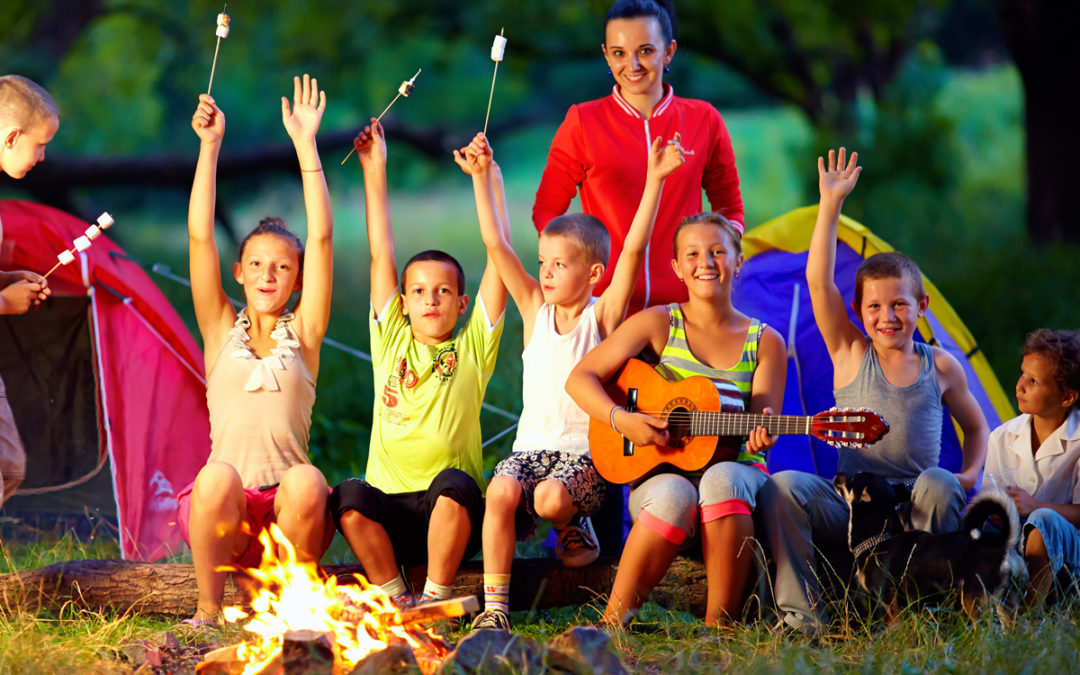
by North Shore Child & Family Guidance Center | Jun 27, 2018 | Blog
Summer has finally arrived, and for many children and teens that means it’s time to head off to camp.
Long Island is loaded with camps from Manhasset to Montauk, from traditional day camps where the focus is on fun (think swimming, arts & crafts and sports) to academic camps that help teens learn skills that will help them prepare for college, as well as their college applications. Of course, there are also overnight camps and residential teen programs all over the country and around the globe.
With so many types of camps, how do you determine which is best for your kid? According to Jill Tipograph, Founder/CEO of Everything Summer & Beyond, a Manhattan-based independent educational consultancy for summer planning guidance (K-12 grades), there are many factors to consider before choosing a camp that will fit your child’s needs—especially if you are planning to send them to overnight camp.
“One of the greatest advantages of attending overnight camp is that it is simply so different from the rest of a child’s scheduled school year,” says Tipograph. “Campers arrive and have the opportunity to try new activities, in a new environment, surrounded by new friends and staff role models. They will try different foods, they will be away from their parents (often for the first time) and they will learn to navigate hitherto unchartered social situations. Not to mention having that critically important break from technology and social media.”
While all of these new experiences can be wonderful in helping your child grow and mature, going to sleepaway camp pushes children outside their comfort zone, and it can feel especially scary to kids who haven’t spent much (if any) time away from home. “For many children, a difficult transition to camp life is a very normal part of the journey,” says Tipograph. “It’s natural for campers to initially struggle with their newfound independence and their unfamiliar surroundings. They might experience homesickness and spend several days yearning for the comfort of their homes. And then, almost always, they will adapt. This is the beauty of camp. In fact, this is one of the most valuable lessons that camp will teach a child – that it is okay to be uncomfortable, and there is value to perseverance. Growth comes from discomfort, and achieving through challenges.”
Separation anxiety can also be an issue with day camp, especially for younger children. But whichever type of camp you are thinking of sending your child to, here’s some advice that Tipograph shares to helping them (and you) get over the “I want Mommy and Daddy” blues.
- Remind them of all of the wonderful reasons that you picked that camp—of the activities they will get to pursue and the friends they will get to make. It is important in the long term that they participated in the process and decision, as that too reminds them they chose the camp with you, increasing their commitment.
- Create an “emotional tool box” they can bring to camp. Have your child make this with you, including samples of favorite things that are comforting, so they can turn to this in times of sadness.
- Reassure them that every camper is feeling some form of what they are feeling, and all of this is normal and to be expected.
- Find out ahead how the camp works to lessen the impact of separation anxiety; share these strategies with your child so they understand who can help them at camp, and how.
- Keep your parental “child sick” feelings to yourself; do not share or project onto your child your thoughts. As if they sense this, vulnerability can surface, making them feel badly that you miss them too much.
- Do not overreact to letters home that reek of homesick statements, as kids write in moments of angst, and this is a catharsis process for them. If you sense trouble, call the camp to discuss this to evaluate if this is a pattern or a one-off moment.
- Do not “make deals.” Do not tell them if they are unhappy you will pick them up; this gives them an out, and does not build resiliency. Reinforce you know the camp cares deeply and they are there to help.
If you feel your child would benefit from some professional counseling to deal with heightened anxieties related to any issue, North Shore Child & Family Guidance Center is here to help. Call us at (516) 626-1971.
Have a wonderful summer!

by North Shore Child & Family Guidance Center | Jun 21, 2018 | Blog
By Andrew Malekoff
This past fall, North Shore Child & Family Guidance Center hosted psychotherapist, author and parenting expert Sean Grover for a workshop titled “When your child relates better to screens than human beings.”
As tech-dependence increases, many kids move through the world in a self-centered bubble, separated from their own thoughts and feelings, and the thoughts and feelings of others. As conversation skills and positive interactions crumble, technology even starts to change kids’ sense of humanity; they are less compassionate and sensitive to others.
“Everywhere you look, children are staring into cell phones, screens, computer screens, tablets, iPads and more,” said Grover, who has appeared on the Today Show, in the New York Times and in many other media outlets. “While some kids use technology as a pastime, others are absorbed by it. Technology devours their lives. They can’t put it down or turn it off. These kids tend to be more isolated and anxious, have poor people skills, difficulty maintaining friendships or an unstable sense of self.”
In his workshop, Grover gave parents guidelines on how to take back control and help their offspring wean off their technology addiction. Here are some of his tips:
1. Tech Blackouts
Set aside specific times at home when no one (parents included) uses technology. Cell phones, computers, iPads…everything is off. If you want your kid to be less tech-addicted, you must lead the way. Tech-free time can be spent reading, talking, playing games, cooking, making art…anything creative or social will do.
2. Tech Hours
Kids resist structure — but fall apart without it. Technology needs limits. For instance, I often recommend that families establish tech hours; time for homework, gaming or surfing the Internet. Scheduling tech time will help to limit battles by setting clear guidelines. When it comes to gaming, many parents may allow 30 minutes a day during the school week and two hours a day on the weekends.
3. Tech Spaces
When possible, keep all technology in a common space like the living room — not in a child’s bedroom. Establish communal places for tech time; try to avoid allowing your kid to disappear for hours behind a closed door.
4. Tech Limits
There are plenty of online services that can filter out inappropriate or violent material. These services can also limit Internet access by scheduling times that the Internet is available and times when it is not. One example of such a service is Net Nanny.
If you haven’t already read between the lines, you should know that how you use tech devices influences your ability to effectively guide your kids. Although your example is not the sole factor, keep in mind that as distant as some kids become from adults as they are moving through their teen years, they continue to observe you—more closely than you know.
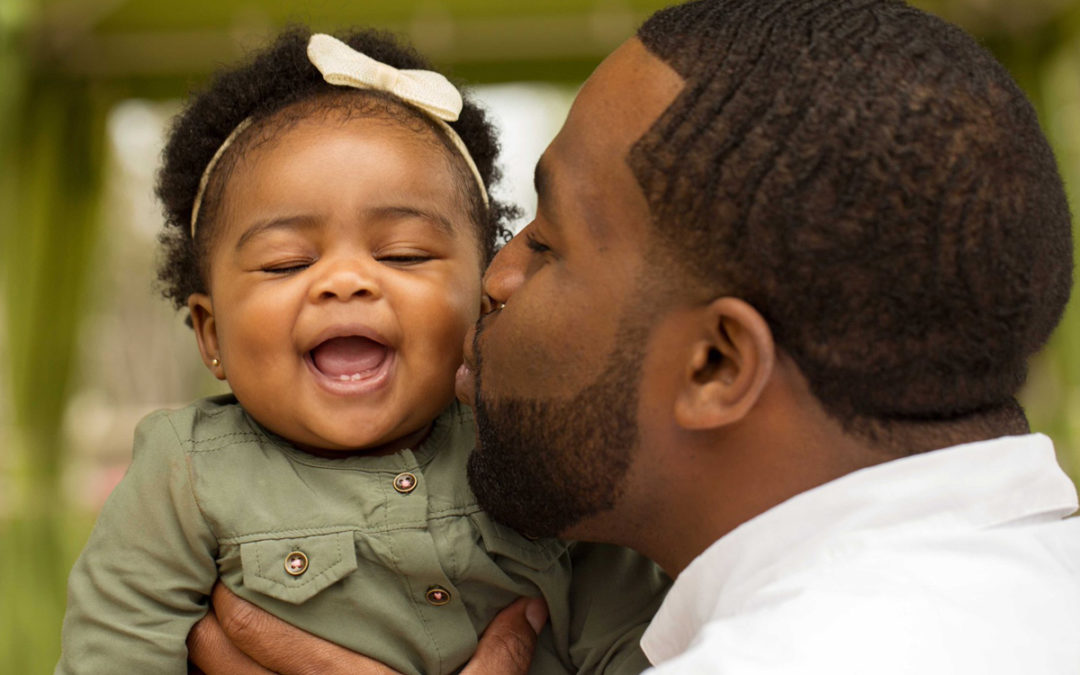
by North Shore Child & Family Guidance Center | Jun 13, 2018 | Blog
With Father’s Day coming up this Sunday, it’s a good time to look at the important role fathers play in the lives of their children.
In our culture, as in most, we tend to focus on the mother-child bond as primary, but fathers play just as important a role in the emotional well-being of their offspring. Sociologist Dr. David Popenoe, one of the pioneers in the field of research into fathers and fatherhood, says, “Fathers are far more than just ‘second adults’ in the home. Involved fathers bring positive benefits to their children that no other person is as likely to bring.”
One of the most important ways a father can help is to have a positive relationship with his children’s mother. A study from the U.S. Department of Health & Human Services titled The Importance of Fathers in the Healthy Development of Children stated, “A father who has a good relationship with the mother of their children is more likely to be involved and to spend time with their children and to have children who are psychologically and emotionally healthier.
“Similarly, a mother who feels affirmed by her children’s father and who enjoys the benefits of a happy relationship is more likely to be a better mother. Indeed, the quality of the relationship affects the parenting behavior of both parents. They are more responsive, affectionate, and confident with their infants; more self-controlled in dealing with defiant toddlers; and better confidants for teenagers seeking advice and emotional support.”
From The Importance of Fathers in the Healthy Development of Children, here are some other ways that the father-child bond is so important:
- A father’s behavior serves as a role model for boys on the way women should be treated. When they act respectfully and affectionately with the mother of their children, boys learn to mirror that behavior in their relationships with females.
- Similarly, girls with fathers who are respectful and loving to their wives and other women in their lives are less likely to get involved in harmful relationships with men in the future.
- Children with fathers who interact and play with them end up having higher IQs and being more successful in their academic endeavors.
- Children with involved fathers tend to be emotionally secure, confident and socially connected with their peers. They’re also are less likely to get in trouble at home or in school.
- In general, fathers promote independence. While mothers stress nurturing, fathers focus on achievement, both of which are important to a child’s healthy development.
So, on this Father’s Day, let’s hear it for the all the dads who actively nurture healthy and happy relationships with their children!
Sources:
https://www.childwelfare.gov/pubPDFs/fatherhood.pdf
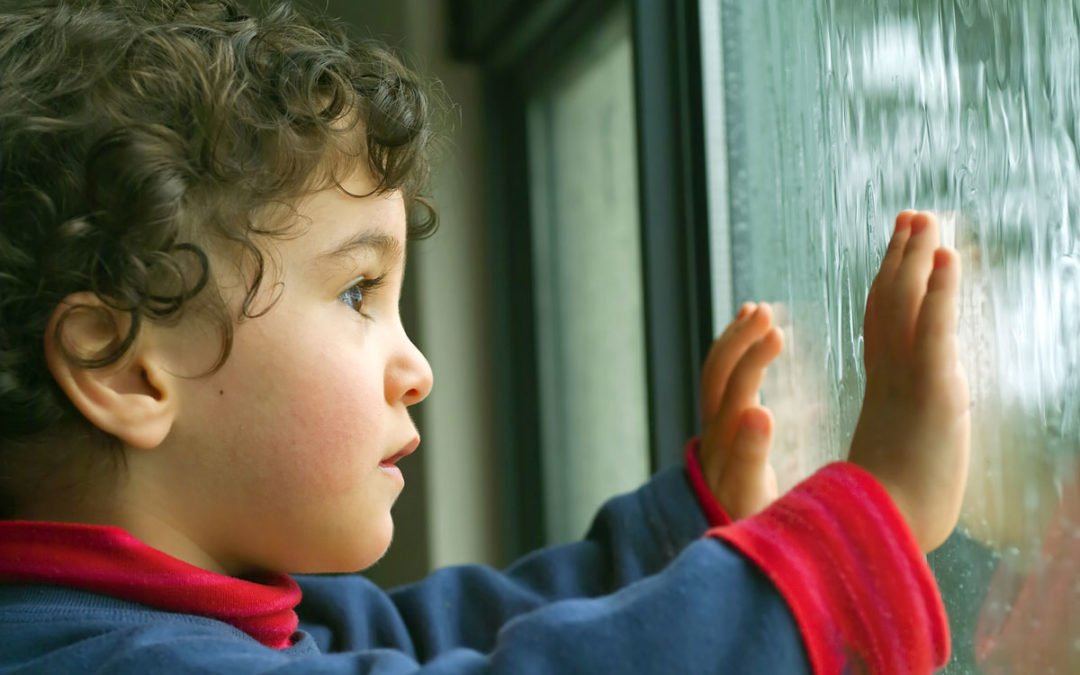
by North Shore Child & Family Guidance Center | Jun 6, 2018 | Blog
June 1st marked the beginning of the Atlantic hurricane season. Although it’s been nearly six years since Hurricane Sandy devastated many coastal areas of Long Island, the possibility is very real that we could face another similar crisis. Being prepared is essential—not only with enough batteries and food supplies, but also with the wisdom of how to help young people deal with the fear and trauma they may experience after a storm.
Following is advice from North Shore Child & Family Guidance Center Executive Director Andrew Malekoff on how to soothe your children in the face of a disaster, and also some tips on how to prepare a disaster kit from the National Hurricane Center.
Helping Children in the Aftermath of a Disaster
Provide protection, support, and safety. Children and youths need safe places to go, with worthwhile things to do and opportunities for belonging. And they need relationships with competent adults that understand and care about them. Living through a disaster can contribute to a pervasive sense of fearfulness, hyper- vigilance and despair. Do all you can to ensure a basic level of physical and emotional safety that helps to cultivate a sense of trust. Safe havens in school and the community are prerequisites for helping kids through this disaster.
Help to re-establish connections and rebuild a sense of community. The trauma of living through a disaster leads to demoralization, disorientation and loss of connection. Hurricanes and other disasters can leave individuals feeling unprotected and on their own. Connecting with others addresses the primary need of survivors to affiliate and can promote mutual support, reduce isolation, and normalize young (and older) peoples’ responses and reactions to what feels like a surreal situation. Don’t go it alone.
Offer opportunities for action that represents triumph over the demoralization of helplessness and despair. “Talking about the trauma is rarely if ever enough,” advises noted trauma expert Bessel van der Kolk. Children and teens can be encouraged to write poetry, create artwork, engage in social action, volunteer to help other victims or any of the multitudes of creative solutions that individuals can find to confront even the most distressing troubles. Creatively engage your children to give them some control over what feels like and out-of-control situation.
Actively endure. Louis Lowy was a World War II concentration-camp survivor. Although he rarely talked about his wartime experiences, his later career as a social work educator was infused with the time he was leader of the Deggendorf Displaced Persons Center. Lowy taught “active endurance,” which he described as “not merely enduring passively, but also learning to endure actively…substituting hope for despair, persevering rather than giving up, persisting rather than surrendering in the face of difficult odds, and helping to sustain ourselves [and those that we care about] through mutual support.” Parents can set this example for their children.
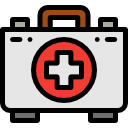 Basic Disaster Supplies Kit
Basic Disaster Supplies Kit
To assemble your kit, store items in airtight plastic bags and put your entire disaster supplies kit in one or two easy-to-carry containers such as plastic bins or a duffel bag.
A basic emergency supply kit could include the following recommended items:
- Water – one gallon of water per person per day for at least three days, for drinking and sanitation
- Food – at least a three-day supply of non-perishable food
- Battery-powered or hand crank radio and a NOAA Weather Radio with tone alert
- Flashlight
- First aid kit
- Extra batteries
- Whistle to signal for help
- Dust mask to help filter contaminated air and plastic sheeting and duct tape to shelter-in-place
- Moist towelettes, garbage bags and plastic ties for personal sanitation
- Wrench or pliers to turn off utilities
- Manual can opener for food
- Local maps
- Cell phone with chargers and a backup battery
Download the Recommended Supplies List (PDF)
Simple Storms
It’s important to note that young children might be afraid of simple thunderstorms. If you have a child who fears the rumble of thunder and climbs into bed, let them know they are safe inside your home; encourage them to self-soothe with a favorite stuffed animal or blanket; and let them express their fears to you. Don’t minimize their concerns by telling them they’re silly, but do explain that they are safe.
Sources:
https://www.ready.gov/build-a-kit
https://www.nhc.noaa.gov/

by North Shore Child & Family Guidance Center | May 30, 2018 | Blog
A few years ago, in an effort to better understand where sex and social media intersect with respect to attitudes and behavior, The National Campaign to Prevent Teen and Unplanned Pregnancy conducted a survey of teens and young adults. The study measured the proportion of them who are posting sexually suggestive text and images. There were a total of 1,280 respondents— 653 teens (ages 13-19) and 627 young adults (ages 20-26).
The survey found that a significant number of the 13-19 year olds have electronically sent, or posted online, nude or semi-nude pictures or video of themselves. Sexually suggestive messages via text, email or IM (instant message) were even more prevalent according to the survey. Seventy-five-percent of the teen respondents and 71% of young adults said sending sexually suggestive content “can have serious negative consequences,” yet they continue this behavior despite substantial personal safety and legal risks.
Parents, caregivers and other relevant people in kids’ lives need to be attuned to this behavior and be prepared to address it.
Despite the influence of peers, which is not all negative, this is only one part of a four-part community that includes family, larger community and media influences, all of which have demonstrable effects on adolescents’ sexual attitudes and behavior and all of which interact in a complex way. For example, beyond the peer group are information and images transmitted by the media that may typify values that are detrimental to young people’s self-image and health.
In families in which sexuality is not a taboo subject and related discussions occur quite naturally throughout childhood, pathways are forged for ongoing dialogue about all aspects of sexuality. If parental influence is strong enough—that is, if their relationships with their children are warm and close and their parenting style is authoritative—it can be a powerful protector against negative peer influence.
The American Academy of Pediatrics offers some good tips for talking to you kids about texting (go to www.aap.org and search for “sexting”):
- Talk to your kids, even if the issue hasn’t directly impacted your community. “Have you heard of sexting?” “Tell me what you think it is.” For the initial part of the conversation, it is important to first learn what your child’s understanding is of the issue and then add to it an age-appropriate explanation (see next bullet).
- Use examples suited to your child’s age. For younger children with cell phones who do not yet know about sex, alert them that text messages should never contain pictures of people—kids, teens or adults—without their clothes on, kissing or touching each other in ways that they’ve never seen before. For older children, use the term “sexting” and give more specifics about sex acts they may know about. For teens, be very specific that “sexting” often involves pictures of a sexual nature and is considered pornography.
- Make sure kids of all ages understand that sexting is serious and considered a crime in many jurisdictions. If they “sext,” there will be serious consequences, quite possibly involving the police, suspension from school, and notes on the texter’s permanent record that could hurt their chances of getting into college or getting a job.
- Experts have noted that peer pressure can play a major role in the sending of texts, with parties being a major contributing factor. Collecting cell phones at gatherings of tweens and teens is one way to reduce this temptation.
- Monitor headlines and the news for stories about sexting that illustrate the very real consequences for both senders and receivers of these images. “Have you seen this story?” “What did you think about it?” “What would you do if you were this child?” Rehearse ways they can respond if asked to participate in inappropriate texting.
- Encourage school and town assemblies to educate parents, teachers and students.
An important and related problem is that with social networking there is no respite. Social media has a 24-7 quality that leaves many teens feeling that there is nowhere to turn and no escape.
Social media has opened the door to new avenues of sexual expression and new challenges for families, health educators and human services professionals. Don’t miss this opportunity to educate your youngster about its dangers.
Note: This story originally appeared in a column in Anton Media. It was written by North Shore Child & Family Guidance Center Executive Director Andrew Malekoff.

by North Shore Child & Family Guidance Center | May 23, 2018 | Blog
Last weekend’s royal wedding went off without a hitch. It was a beautiful day filled with many touching moments, and it will also be known as the most inclusive and diverse wedding in the history of the royal family.
In the weeks and months to come, Prince Harry and Princess Meghan will likely be defining the role that they plan to take in terms of philanthropic efforts. But it’s clear that Princess Meghan will be an active proponent of causes that she cares for. The BBC reported that, after announcing the engagement, she said, “What’s been really exciting, as we talk about this as the transition out of my career… is that the causes that have been very important to me, I can focus even more energy on.”
Among her current activities, she has already been a global ambassador for World Vision, which works to help children, families, and their communities reach their full potential by tackling the causes of poverty and injustice.
But Meghan Markle’s advocacy work came long before she was a princess. At just 11 years old, after seeing a sexist TV ad, she wrote letters to Hillary Clinton, Linda Ellerbee, Gloria Allred, and the company responsible for the ad. According to Harper’s Bazaar, Markle received replies from all three women, and the soap company changed the wording in the commercial.
For his part, Prince Harry has spoken passionately on many issues, with one of them being mental health. Along with his brother and sister-in-law, Prince Harry created the Heads Together organization, which advocates for open discussion and better services for people in need of mental health care. (click here for a video of Prince William, Princess Kate and Prince Harry discussing the issue).
The Duke and Duchess of Cambridge and Prince Harry said:
“Since we launched Heads Together last May, we have seen time and time again that shattering stigma on mental health starts with simple conversations. When you realise that mental health problems affect your friends, neighbours, children and spouses, the walls of judgement and prejudice around these issues begin to fall. And we all know that you cannot resolve a mental health issue by staying silent.”
In a personal story in Britain’s Metro News on May 19, the day of the wedding, a parent wrote a touching article about what it’s like to have a child in need of mental health care. You can read the entire piece here, but below are some excerpts.
“We were naive at the beginning. We assumed that getting help for our son’s mental health issues would be straight forward and trusted the system. After all, if it was a broken leg we would have taken him to A&E and the wait for help would take hours rather than months and months. That sounds flippant, of course they are completely different, but the months rolled on and eventually I gave up and called the pediatrician’s office. ‘You haven’t dropped off the radar’ we were told. It definitely felt like we had. At seven, my son developed a neurological condition which came with comorbids – for him, it included OCD, anxiety, and depression.
In an ideal world, waiting lists will be halved at least. Every school would have a mental health practitioner, and appointments would take place on site meaning no more half days off school for appointments. I think having care available in school would make children feel less ‘different’ as having to take half days for hospital visits means missing out on school work and inevitably leads to being questioned by schoolmates about where they’ve been.
Classes looking at mental health, well-being and how to manage your own mental health would be introduced from a young age. These children need to know how to cope but also that they’re no different, many people have issues with their mental health, that it’s not shameful or embarrassing. They are normal.”
READ THE FULL ARTICLE HERE.
Want to get involved in advocating against stigma, or need help? Follow us on Facebook at www.facebook.com/NSCFGC/, or call (516) 626-1971 for an appointment.
Sources:
https://www.harpersbazaar.com/celebrity/latest/a13945782/meghan-markle-charity-work-philanthropy/
https://metro.co.uk/2018/05/19/what-its-like-to-be-a-parent-of-a-child-with-mental-health-issues-7550542/
https://www.headstogether.org.uk/

by North Shore Child & Family Guidance Center | May 15, 2018 | Blog
Memorial Day is a wonderful time to honor our veterans, and it also marks the beginning of the summer season. More cars are expected to be on the road this coming Memorial Day than ever, according to the American Automobile Association.
The newest drivers on the road at any time of year are teenagers, and it’s your responsibility as a parent to teach them the rules of the road.
First and foremost, impress upon your teens that driving while impaired—by alcohol, marijuana or any type of drugs, prescription or illegal—is absolutely forbidden. “Whether by drugs, alcohol or a combination of both, impaired drivers not only risk the lives of themselves and their passengers, but every driver on the road,” says Kathy Knaust, Clinical Supervisor at North Shore Child & Family Guidance Center’s Leeds Place location in Westbury. “Telling them not to drink or use drugs while driving isn’t enough: You must tell them to never get in a car with anyone who has been drinking or drugging.”
Another big problem that has grown by leaps and bounds in the last several years is distracted driving. That might involve eating or drinking, playing with the stereo or navigation system, or the worst offender of all—texting while driving.
According to the National Highway Traffic Safety Administration, texting is the most dangerous of all distractions. The organization reports that sending or reading a text takes your eyes off the road for about five seconds. If you’re driving 55 mph, that’s like driving the length of an entire football field with your eyes closed.
During the daytime, estimates are that nearly 500,000 people are using cell phones while driving, with teens as the largest group reported as distracted at the time of fatal crashes. No texting while driving must be an unbreakable rule that is strictly enforced.
Before they are even old enough to drive, you will be your teens’ role model as to what safe driving is. When they are ready to learn, talk to them about what you are doing as you drive them around. Some tips:
- Tell them about the safe distance between your car and the one ahead of you.
- Explain to them that the “9 and 3” positions on the steering wheel are the safest hand placement because it allows the airbags to inflate properly and safely.
- Show them that you obey stop signs, speed limits and all of the other rules of the road.
When they get their driving permits and are ready to hit the road, take it slow. Practice somewhere that there are no other cars, like an empty parking lot. When they make a mistake, correct them by asking questions rather than telling them what they should have done; instead of berating them, ask them a question. For example, if they’re going too fast, ask them what the speed limit is. That will help them learn to pay attention in the future.
We wish you and your family safe travels throughout the year!
Sources:
https://newsroom.aaa.com/2018/05/nearly-42-million-americans-will-kick-off-summer-memorial-day-getaway/
http://www.sr22insurance.net/a-comprehensive-guide-on-road-safety-for-parents/
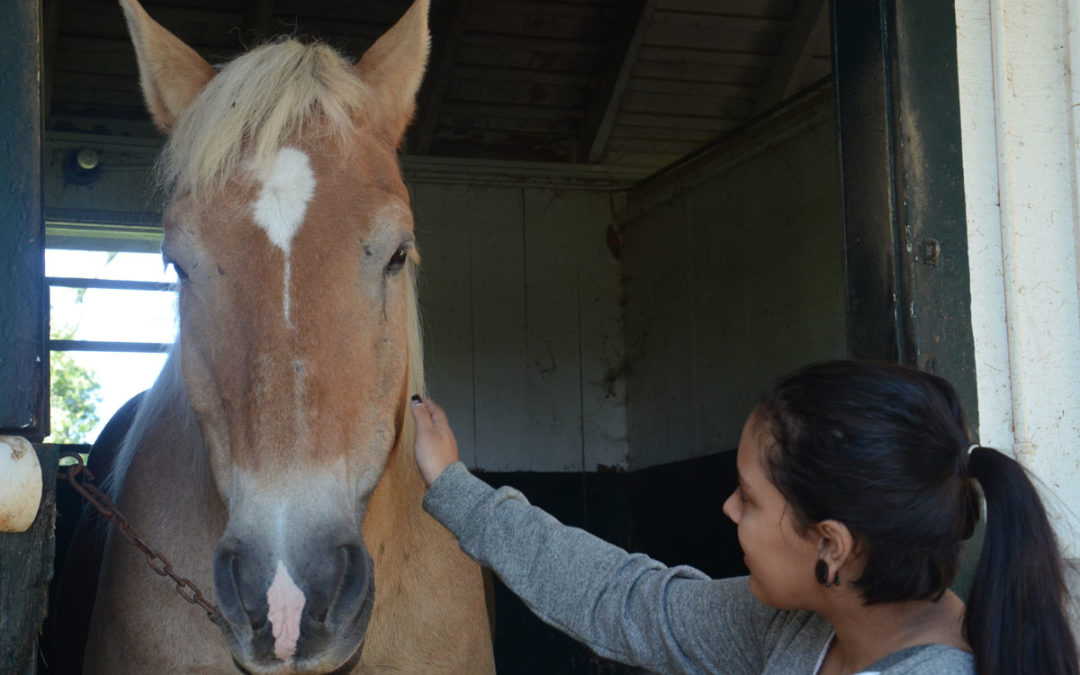
by North Shore Child & Family Guidance Center | May 8, 2018 | Blog
While all kids benefit from their relationships with animals, animal-assisted therapy is an especially important tool for children and teens who are on the autism spectrum or who have other special needs or emotional issues such as depression, anxiety or social isolation. Pets help youngsters not only to feel loved, but also to help them open up, learn to bond and decrease their level of stress.
When Bideawee visited North Shore Child & Family Guidance Center with their therapy dogs, one very shy girl who barely spoke lit up when she saw the dogs enter the room. “She asked me if she could go pet the dog, and I told her she needed to ask the volunteer,” explains Lee Holtzman, who heads up the Guidance Center’s Family Advocacy Program. “Normally, it would have been almost impossible to get this girl to speak with someone she never met, but her desire to spend time with the dog was so strong that it helped her overcome her fears and speak with the volunteer.”
The therapy dogs also helped calm down a boy who has impulsivity issues and tends to be very loud. “We explained how dogs get startled by very loud noises or sudden movements, and that helped him learn a lesson about behaving appropriately in a calm manner,” says Holtzman. The goal is that the lessons the children learn working with pets can be carried over into their lives.
A trip by teens from our Latina Girls Project offers another example of how working with animals can be transformative. The girls, many of whom suffer from depression and anxiety, are typically shy and withdrawn when they first come to the Guidance Center, so some of our therapeutic goals are to help them get in touch with their feelings, develop self-esteem, bond with each other and with their therapists, and learn skills to help them navigate life and heal their inner wounds.
Associate Executive Director Regina Barros-Rivera took the girls to HorseAbility Therapeutic Riding Program in Old Westbury, an equine therapy program designed to promote the physical, psychological, emotional, social and spiritual well-being of its participants, many of whom are special needs children and teens.
Of the 18 girls who went on the trip, only one had been on a horse before, so many of the girls expressed trepidation. The volunteers at HorseAbility showed the teens what they would be doing that day, including riding, guiding the horses through an obstacle course and learning to groom and feed them.
The volunteers told the girls each horse’s story; many are rescues. The girls quickly bonded with these beautiful animals, and all were moved by the fact that the horses had faced difficulties in their lives, just as the girls do.
“We saw incredible growth in several of the girls through the experience,” says Barros-Rivera. “One teen who tends to isolate and act as if she doesn’t care about anyone walked over and hugged another teen whose anxiety about riding had her sobbing and shaking. It was a very powerful moment for both of them and one that can create lasting growth.”
For all children, teens and adults, too, animals are a true treasure, helping all of us become better human beings.

by North Shore Child & Family Guidance Center | May 1, 2018 | Blog
It’s Mental Health Awareness Month, and one thing that has come a long way in recent years involves research on the brain’s development. Once upon a time, there was widespread belief that the human brain was fully developed by the time a child reached five or six years old. We know, for example, that the amygdala, the part of the brain that is responsible for instinctual reactions such as fear and aggressive behavior, does fully develop early. However, thanks to new technologies such as magnetic resonance imaging (MRI), neuroscience researchers have discovered that there are significant changes that occur around the time of the onset of puberty, between 10 and 13 years of age.
Scientists have discovered that during adolescence there is a rapid increase in the connections between the brain cells and refinement of brain pathways and that these changes are critical for the development of coordinated thought and action. As psychotherapist Craig Haen put it, “In the teen years, young people are going through a software upgrade, neurologically, in which circuitry is being consolidated, networks are being reorganized, connections are being made stronger and more expedient and unused pathways are wearing away.”
Changes in the brain take place in the context of many other factors including early childhood experiences and environment. Scientists are continuing to look into the development of the brain and the relationship between the changes taking place, behavior and health.
The stakes are great during the teenage years. There is a perplexing contradiction between adolescents reaching the peak of physical health, strength and mental capability and, at the same time, facing greater risks and hazards than ever before. Parents walk a fine line between supporting their children’s independence and protecting them from harm.
Child and adolescent brain studies affirm that the brain is hard-wired for social interaction and for attaching and bonding with caregivers. Despite all the scientific advances, according to leading brain researcher Jay Giedd, people might be disappointed to know that the “best advice we can give is things that our grandmother could have told us generations ago: to spend loving, quality time with our children.”
Teenagers hunger for significant relationships with adults who care about them. This belief has been validated by social scientist Ellen Galinsky, who interviewed more than 1,000 children and found that teens longed for more time with their parents, even when they seemed to be pushing them away. Galinsky concluded , “Even though the public perception is about building bigger and better brains, what the research shows is that it’s the relationships, it’s the connections, it’s the people in children’s lives who make the biggest difference.”
If a child’s job is to explore and a parent’s job is to protect, understanding changes in adolescent brain development offers an opportunity to support and create environments that promote positive peer experiences, where teens can safely explore and experiment and avoid behavior that can harm themselves or others.
Note: A version of this story first appeared in a column by Andrew Malekoff in Anton Media.






















 Basic Disaster Supplies Kit
Basic Disaster Supplies Kit



